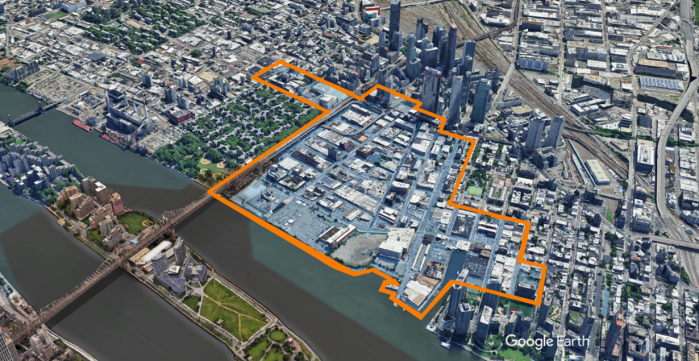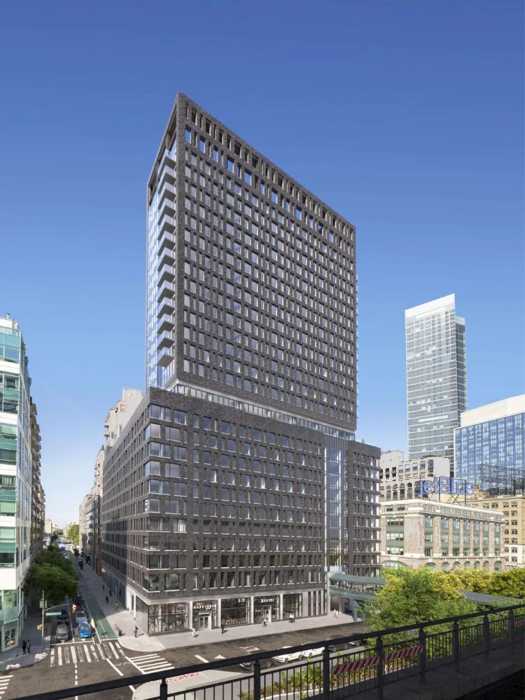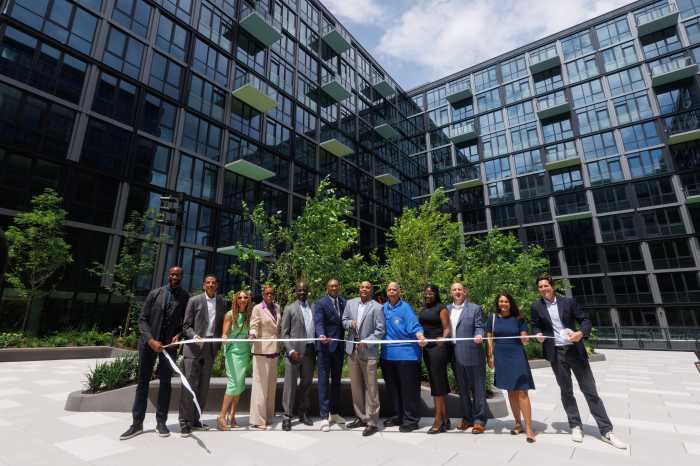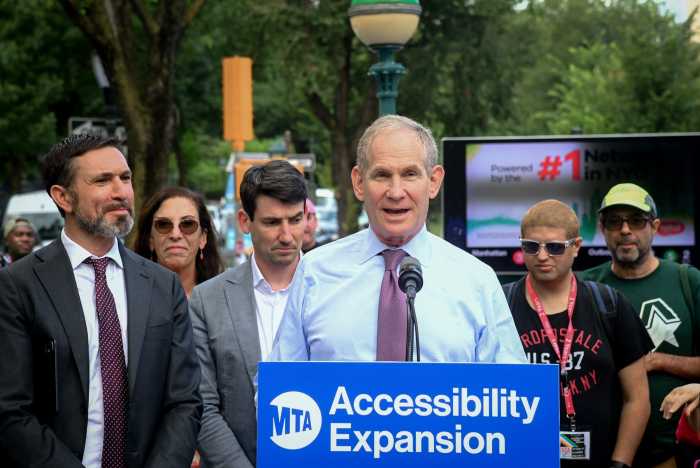Queens Borough President Donovan Richards announced on Monday a long list of recommendations to approve the city’s One LIC Neighborhood Plan with conditions.
The sweeping proposal entered the city’s Uniform Land Use Review Procedure (ULURP) in April, following certification by the City Planning Commission, and aims to transform a large portion of Long Island City with new zoning rules that would create nearly 14,700 housing units—including 4,300 affordable homes—alongside 14,400 jobs, over 3.5 million square feet of commercial and industrial space and expanded access to the East River waterfront.

“Long Island City is one of the fastest growing communities in the country due its proximity to Manhattan, serene and publicly accessible waterfront, thriving arts and culture scene, blossoming nightlife and booming economy,” Richards said. “But as we see in many urban settings across the nation, community growth that rapid and substantial threatens to price out longtime residents and put this neighborhood financially out of reach for all but a lucky few.”

The recommendation to approve the plan with conditions comes one month after Richards held a public hearing on June 26 to hear from and question officials from the Department of City Planning on the proposal, as well as dozens of residents from across Western Queens who offered testimony. Specific conditions laid out in Richards’ recommendation include an exploration of the construction of a full-service hospital in Long Island City and the creation of a new NYC Health + Hospitals or NYC Department of Health and Mental Hygiene facility in or near the rezoning area and a $20 million investment to support various capital needs at Mount Sinai Queens in Astoria, including the creation of a new intensive care unit.
His housing recommendations include the mapping of only Mandatory Inclusionary Housing Options 1 and 2 within the rezoning area to preserve deep affordability and encourage middle-class stability, the expansion of the CityFHEPs Housing Voucher Program and the elimination of qualifying criteria around hours worked while housed in a homeless shelter and the immediate prioritization of all capital needs at the NYCHA Queensbridge Houses, ensuring that current and future residents can live in dignity and safety.
“It is my belief that, as a whole, this proposal is a significant step forward in preserving the unique character of Long Island City, while ensuring the bright future of this community is one that can be enjoyed by all who currently call it home and those who will do so in the coming years — regardless of one’s place in the socioeconomic spectrum,” Richards said.
His recommendations for transit and infrastructure include the prioritization of capital improvements along the E, F, G, M, N, R, W and 7 subway lines, as well as the Long Island Rail Road stations in or near the rezoning area, and a commitment by the city’s Department of Environmental Protection to complete a study of drainage within the rezoning area by Spring 2026, guiding future investments in stormwater and sewage management infrastructure.
On education, Richards recommends the construction of new schools at 2-10 54th Ave., 23-10 43rd Ave. and 44-59 45th Ave., and the allocation of at least $15 million for capital needs across more than two dozen schools in and around Long Island City. Richards recommends the construction of a new Queens Public Library branch at the Queensbridge Houses, a $900,000 investment to support the construction of the future Court Square QPL branch, as well as a baselining of at least $250,000 for ongoing annual expenses and a $225,000 investment to support various enhancements and upgrades at the Queensbridge Tech Lab branch of the QPL, as well as the baseline of at least $250,000 for ongoing.
“Queens Borough President Donovan Richards’ approval of the OneLIC Plan with conditions is a recognition of the nearly two years of work that our community has done with the City to address the critical needs of Long Island City. Following votes in favor of the project with stipulations by Community Boards 1 and 2, the recommendations provided by the Borough President further highlight the need for the City to make essential investments in Long Island City.” Council Member Julie Won said. “From day one, our community’s priorities have been to maximize affordable housing, a connected waterfront, investments in the Queensbridge Houses, investments in sewage and plumbing infrastructure and building new schools. These are the minimum requirements for the project to receive my support when it comes before the City Council for a vote.”
Richards also lists a number of workforce and business support recommendations, as well as parks and open spaces.
“Long Island City has long been one of the city’s most dynamic communities, but parts of it remain stymied by outdated zoning that limits new housing. With the OneLIC Neighborhood Plan, we can change the status quo by delivering thousands of new homes, requiring income-restricted affordable housing, creating more job opportunities, enhancing public waterfront access and more,” Department of City Planning spokesman Joe Marvilli said. “We deeply appreciate Borough President Richards’ support and look forward to reviewing his recommendations as we work to create a more active, equitable and vibrant future for this neighborhood.”

Richards also has a number of community support recommendations, including the creation of a LIC Rezoning Working Group, made up of elected and community stakeholders, that would meet on a quarterly basis over the next five years to assess the goals and promised community benefits through the project over a 10-year timespan. He also recommends the creation of a $50 million Educational Fund to support the programmatic and logistical needs of Long Island City and the distribution of up to $10,000 in one-time small business grants for independent small business owners in Long Island City to be administered by the Department of Small Business Services and the New York City Economic Development Corporation.
“The Long Island City Partnership is proud to have supported this important rezoning effort, which offers a clearer, more cohesive future for Long Island City,” Long Island City Partnership President Laura Rothrock said. “This plan reflects thoughtful engagement with a broad range of community needs – housing, community space, infrastructure and economic growth – while also helping to better connect the neighborhood. We’re encouraged by the Borough President’s conditional support and hope all parties can come to a workable solution that allows this plan to move forward in a way that benefits residents, businesses and future stakeholders alike.”
Following Richards’ recommendations, which are advisory in nature, the City Planning Commission will vote on the proposal in the coming weeks. If approved by the CPC, the plan will move on to a final vote by the City Council.




































